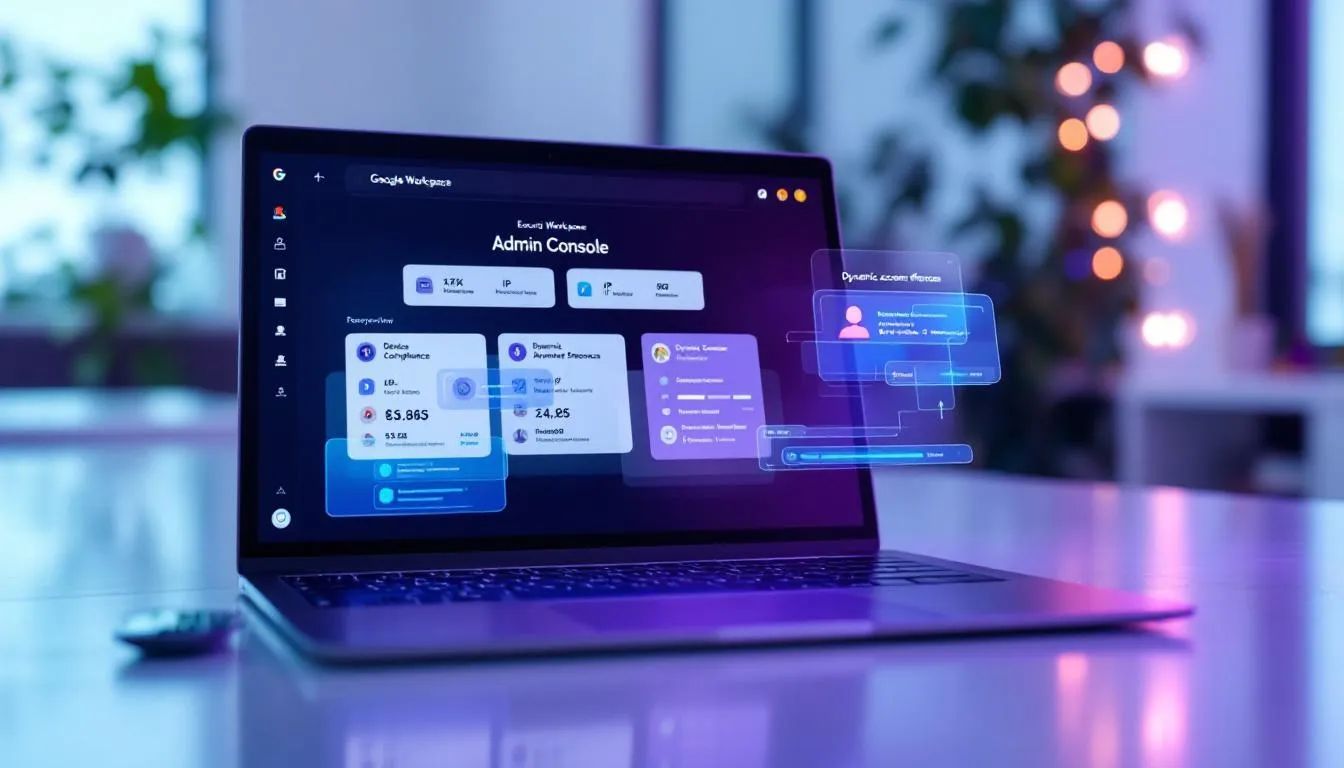Context-Aware Access
Context-aware access is an intelligent security framework that controls user access based on contextual factors such as device security status, user identity, location, and time of access. Instead of applying the same rules to every request, it adapts in real time to ensure that only trusted users on secure devices can reach sensitive data.
This adaptive method helps organizations protect cloud services and internal systems by dynamically granting or restricting access depending on risk signals. In short, it provides the right access, to the right user, at the right time — balancing usability with enterprise-grade security. Context-aware access is available in enterprise standard editions, offering comprehensive access control and security policy capabilities for organizations. However, real-time evaluation of multiple contextual signals requires significant computational resources and can lead to performance issues if not properly managed. Additionally, the complexity in policy configuration can make it challenging to define and manage numerous contextual factors and rules. It is crucial to carefully select the appropriate conditions, roles, and request attributes when configuring context-aware access policies to ensure precise and effective access control.
For a deeper look at this principle, see Adaptive Access Control: How Context-Aware Authentication Enhances Security.
Google Workspace
In Google Workspace, context-aware access allows administrators to define access policies based on user device security status and network context. Admins can control which devices, users, or locations can connect to company data through Google Cloud or enterprise apps.
For example, admins might restrict downloads of sensitive files to corporate-managed laptops, while still allowing read-only access from mobile devices. This flexibility helps maintain security without interrupting productivity.
Google Workspace’s context-aware access is managed through the Admin Console, where IT teams can easily configure, test, and monitor access levels. Admins can also set permission levels for different user groups, such as interns or contractors, directly within the Admin Console.

Context-Aware
A context-aware system doesn’t rely solely on passwords or roles — it evaluates multiple signals before allowing access. These include:
User identity (who is requesting access)
Device type and health (is it secure and up to date?)
Location and IP address (where is the request coming from?)
Time and behavior patterns (is this consistent with normal activity?)
This multi-factor evaluation process enhances both security and compliance by adapting access dynamically based on context. It prevents unauthorized access attempts — even if login credentials are stolen. Additionally, behavioral analysis can identify anomalies in user activity that trigger security responses, further strengthening the system's ability to detect and mitigate threats. Risk-based authentication analyzes multiple factors to identify risky sign-in attempts that might indicate a compromised account or device.
Aware Access
Aware access policies combine identity verification and device intelligence to give organizations finer control over user access. Instead of treating every user the same, the system evaluates conditions in real time and adjusts permissions automatically.
For instance, if a login attempt comes from a new location or an unmanaged device, the system might prompt for multi-factor authentication (MFA) or block access altogether. By making access decisions smarter, aware access reduces the attack surface and improves user experience by removing unnecessary friction for trusted users.
Access Levels
In a context-aware model, access levels define how much data or which services a user can reach depending on current conditions. These levels can range from unrestricted access to partial or blocked access. This approach aligns with Zero Trust security principles, which operate on the idea that no user or device is inherently trusted, and every access request must be verified.
Admins can set policies that automatically adjust based on context. For example:
Full access from managed corporate devices on secure networks
View-only access from mobile devices
Blocked access from unknown IP addresses or devices with outdated patches
Additional conditions or bindings can be added to existing policies to further refine access control based on organizational needs.
These granular access levels allow businesses to stay secure without compromising flexibility or productivity.
Admin Console
The Admin Console serves as the central point for managing context-aware access in enterprise environments. Within this dashboard, administrators can create, modify, and deploy context-based access policies tailored to organizational needs. However, Context-Aware Access policies only control app access from end-user accounts and do not restrict access to service accounts.
Admins can also integrate Google Cloud services, custom applications, or third-party SaaS tools, maintaining consistent security standards across the enterprise. The console provides clear logs and analytics to monitor access attempts, policy effectiveness, and potential anomalies. Admins can view details of access requests, including permission changes and conditions met, by viewing comprehensive Cloud Audit Logs. Compliance readiness is improved by generating detailed, auditable logs that simplify meeting regulatory requirements.
Access Level
Each access level policy defines specific conditions under which a user or device can connect to company resources. Policies may include combinations of factors like device encryption, OS version, and IP range. IAM conditions allow access restrictions based on URL hosts, paths, date, and time. There are different ways to normalize URL hostname and path strings, and these ways can affect how policy checks are performed.
For example, a company might configure:
High-trust devices → full data access
Medium-trust devices → limited access to certain apps
Low-trust or unknown devices → blocked or quarantined access
By tailoring each access level, admins can minimize risks while maintaining business continuity for legitimate users.
Control Access
Control access dynamically based on context — not just identity. Context-aware frameworks let organizations restrict or grant access automatically, minimizing manual intervention and human error. Granular access control enables administrators to create detailed policies for specific applications or resources, ensuring precise management of access rights. Using Context-Aware Access can help provide granular access controls without needing a VPN.
They also allow admins to create exceptions or temporary permissions for specific use cases like contractors or remote teams, ensuring security and flexibility coexist.
This approach supports Zero Trust principles, requiring continuous verification rather than one-time authentication.
For example, a policy might grant a verified employee access to sensitive content from their office laptop, but deny the same request from an unverified personal device.

Use Cases
Context-aware access provides value across multiple use cases:
Remote work: Allow employees to securely access corporate apps from home or public networks while enforcing device posture checks.
Cloud migration: Control access to cloud workloads in Google Cloud or hybrid environments.
Data protection: Restrict downloads or sharing of sensitive files based on user role and context.
Incident response: Automatically limit access during suspicious activity or credential compromise.
The continuous collection of sensitive data may raise user privacy concerns, necessitating transparent policies and robust privacy practices.
Remote work: Allow employees to securely access corporate apps from home or public networks while enforcing device posture checks.
Cloud migration: Control access to cloud workloads in Google Cloud or hybrid environments.
Data protection: Restrict downloads or sharing of sensitive files based on user role and context.
Incident response: Automatically limit access during suspicious activity or credential compromise.
For organizations embracing Zero Trust, context-aware access provides a scalable way to enhance security without overwhelming IT teams or frustrating end users.
To learn how this ties into broader authentication strategies, see The Future of Authentication: Overhauling How We Prove Identity.
Frequently Asked Questions
What is Context-Aware Access?
It’s a security framework that evaluates user identity, device health, location, and time before granting access to resources.
How Does it Differ from Traditional Access Control?
Traditional systems rely on static rules, while context-aware access uses real-time data to adapt access decisions dynamically.
Is it Available in Google Workspace?
Yes, Google Workspace offers built-in context-aware access controls configurable through the Admin Console.
Why is Device Security Status Important?
If a device is compromised or outdated, context-aware access can block requests or limit access to protect corporate data.
How Does this Improve User Experience?
Trusted users enjoy seamless access, while higher-risk activities trigger additional verification — reducing friction and maintaining security.
